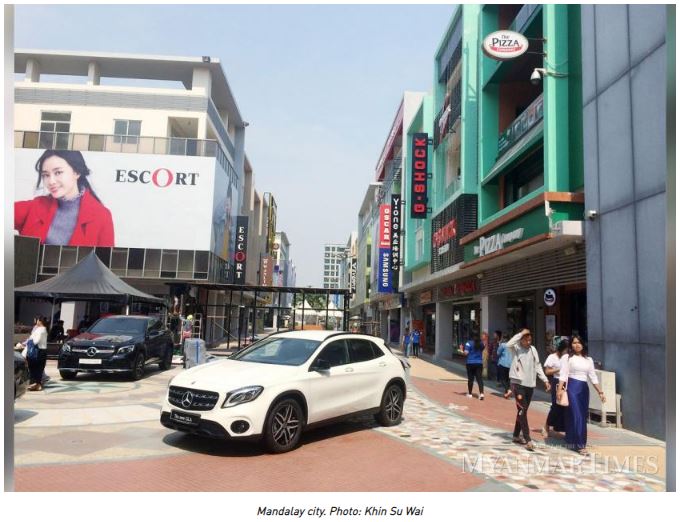Myanmar: Growth, living standards to rise as Mandalay aims to be second growth engine
Living standards in Mandalay Region are expected to rise this year with per capita GDP rising to K1.7 million compared to K1.5 million in the past, said regional chief minister U Zaw Myint Maung at the Mandalay International Trade Fair and Business Forum held on March 23.
This will come on the back of rising growth in Mandalay to be an estimated 8.1 percent this year compared to 7.2pc last year. “With 8095 registered private firms and 4827 small and medium enterprise members, we are aiming to develop Mandalay to becoming the second largest economic engine of Myanmar after Yangon,” he said.
He added that for Mandalay to be Myanmar’s second growth engine, “we need to work on developing the population. Right now, we have around six million people and depending on infrastructure, business development and skilled labor, the region can attain that goal. Our literacy rate is over 94pc, so Mandalay has the potential for development.”
So far, projects worth a total of K7.9 trillion have been earmarked in Mandalay this fiscal year. These include the Myotha industrial project, Yay Ta Gon Taung golf course, Mandalay New Resort in Pyin Oo Lwin and the Amarapura Urban Development Project.
A quarter of these have already been completed, which has contributed to the economic growth and activity in the region, U Zaw Myint Maung said.
The city depends on not only its strategic location but also the investment environment for growth. There are many trade routes passing through the region. The Yangon-Mandalay railway upgrade project started in 2007 will be finished in 2023 and will reduce the travel time from 16 hours to 8 hours. Feasibility studies for Mandalay-Lashio-Muse railway project are also being carried out.
There are six trade routes passing Mandalay Region to India, China and Thailand. A 6 billion yen modern port is currently being built with support from Japan and will be complete in 2021.
There is also a surplus of electricity in Mandalay currently. The region produces 1331 megawatts of electricity but uses around 585MW. There is also more than 62,000 acres of vacant, fallow and virgin land. “There is plenty of infrastructure and space for investors to leverage on,” U Zaw Myint Maung said.
Up until February this fiscal year, Mandalay has seen a total of 11 local investments in the industry sector worth over K27 billion and three in the tourism sector worth more than K10 billion.
Meanwhile, foreign investors have channeled around US$20 million across the industrial, tourism and agriculture sectors. The investors were mainly Chinese, with the remainder from Thailand, Japan and South Korea. So far, there have not been any western investments in Mandalay.
Mandalay Region’s inflation rate, at 11.53 percent, is also the highest in the country remittance levels are also high in Mandalay. Among the reasons is a rising number of Chinese migrant workers to the region. Many of them send money home, leading to capital outflows which weaken the exchange rate and contribute to inflation, said U Myat Thu, Regional Minister for Planning and Finance.
Source: https://www.mmtimes.com/news/growth-living-standards-rise-mandalay-aims-be-second-growth-engine.html


 Thailand
Thailand




